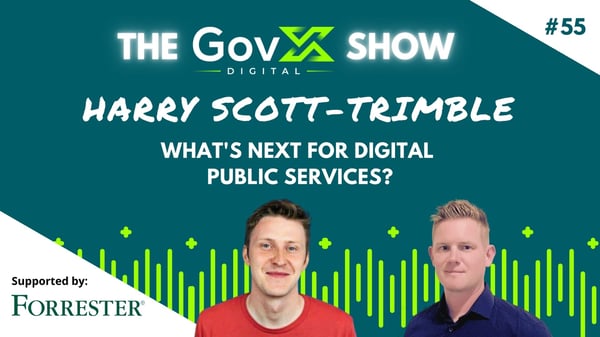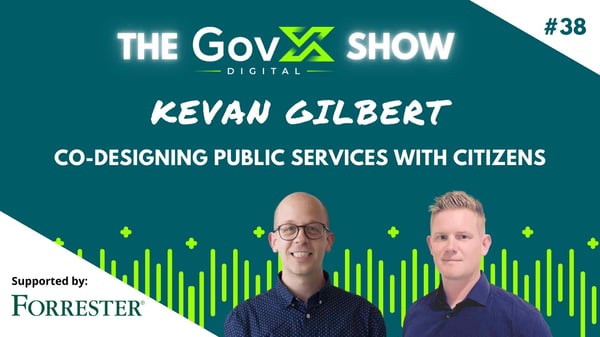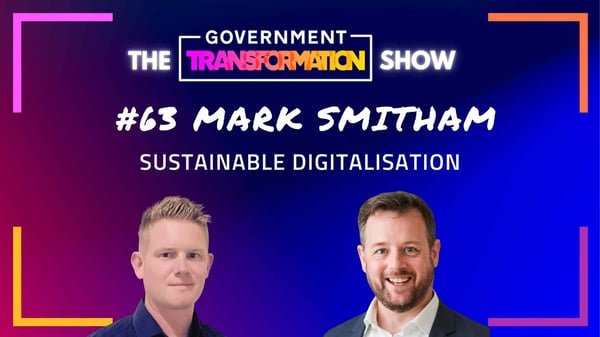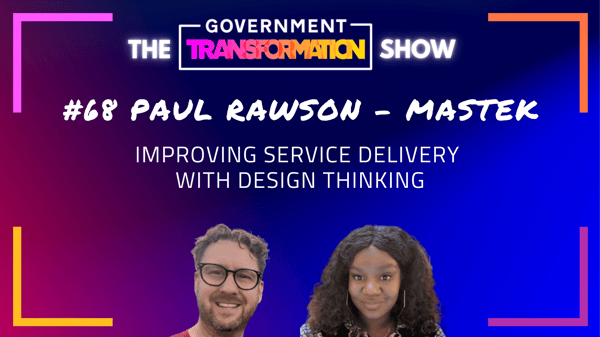How to manage channel shift in public service delivery
.jpg?width=720&name=Channel%20Shift%20(1).jpg)
As digital continues to open up new ways to deliver public services and interact with citizens, what strategy should government organisations deploy in finding the right blend of virtual and face-to-face channels - and how can they manage that shift without leaving anyone behind?
At the Citizen Experience Show, in a discussion supported by Qualtrics, we brought together an expert panel to explore the future of that move towards multi-channel service delivery. This report shares key insights from the experiences of HM Revenue and Customs, Intellectual Property Office, Ofsted and Qualtrics.
Mary Barber - Customer Engagement Transformation Director,
HM Revenue & Customs
How do you help your customer get things right in the time that they have available and be a trusted and responsive organisation? For us, channel shift is about increasing customer engagement, making it easier for customers to transact in their own time, and then can we shift them away from needing to call us to ask for advice.
With services like child benefits, tax credits, childcare services, there are interconnections between tax and benefits, so one of the things we are always looking at is, what's the journey for the customer? Where do they touch? Why do they touch us? What's the trigger point? Because if you can start to understand the trigger point, we can make that easier, perhaps by moving it online, or maybe eradicate it altogether.
There's always going to be a place, I think, for non-digital services. because we’re dealing with people in crisis -people, particularly at the lower income side, who are not sure how they're going to feed their children tomorrow.
There are two big things that we look at when thinking how we design our services. Firstly, looking at them end to end, thinking about how to make them as easy to access for customers as possible, because if something's easy to get into, and you reduce the barriers, then you automatically reduce the number of people who are, by nature, unable to access them. So we’re really starting to look at using voice biometrics, fingerprints and that type of thing from an accessibility point of view.
The other element to consider is how do you blend your services, so that you might have one service, which is something that people might want, but we also have in there a service they might need to use, because we need them to use it, and blend those together to help people feel comfortable coming in and not feeling threatened by them..
Brigid McBride - Programme Director, Digital Change, Ofsted
For Ofsted, channel shift means ensuring that we get our contact strategy right for everyone. For some customers, online services are the right opportunity for them, particularly if they're in busy roles like childminders looking after children. Online services enable them to do that day-to-day business with us at the time that works for them, not us.
But whatever the channel, it needs to be the right transaction or the right outcome for users, so there are occasions when we need to invest our people's time in helping those with more complex, personal or high-risk transactions. So it's pointing customers to the right service that meets their needs.
As we went through the pandemic, we saw the power of digital tools and their ability to support the economy, to support us all working from home and to support customers remotely. But we also got a window on some of those groups that are excluded and the difficulties they experience, whether it's access to devices, access to data, or even just confidence in using online services.
In the big rush towards digital, with so many people now used to online shopping, for example, it’s doubly important that we don't leave people behind in that kind of move. First of all, it's about understanding who your customer groups are and being really clear about how you help them.
Channel shift strategy isn’t something you design and put on a shelf - it’s something you have to continuously listen to and refine.
Christina Butterfield - UK Public Sector Industry Advisor, Qualtrics
We want to enable governments and private sector organisations to listen to customers, to understand what their feedback is telling us and then, critically, to actually act on that feedback.
The UK Government is quite well advanced in having different digital services available for a number of years, so typically the conversations we have with them are that although they have these digital channels and self-service channels set up, they aren't actually managing to channel shift as they expected. They’ve not been able to move people across from those higher-cost contact centre channels onto digital self-serve.
Citizen insights programmes help government to listen across the different channels. We typically find that if an organisation has contact centres, as well as digital channels and face-to-face, they're not actually understanding how customers are interacting with each of those different channels. If a citizen starts to interact via a digital channel, and then for whatever reason comes across friction and goes to another channel, the organisation isn’t understanding why that's happening.
Channel shift strategy isn’t something you design and put on a shelf - it’s something you have to continuously listen to and refine, based on the experience and feedback from both operational insights and customers.
If a citizen accesses a particular service, it's important they’re made aware of all the other services they should potentially be accessing. The trend that more advanced organisations are moving towards is that journey orchestration piece - for example being able to recommend four other services based on their profile and the interactions with a particular citizen.
There’s a balance to be managed between efficiency and outcomes, because if you deliver an efficient service experience, but it doesn't deliver the desired outcomes, what’s the point? If a citizen interacts with your services and the outcome is poor or isn't delivered, they're going to lose trust in your organisation. They're likely to lose trust in that channel they've interacted with as well, which will probably push them to the higher-cost channels.
There’s a need to make sure that we're building the right accessibility into our digital services and making alternatives available
Sarah Whitehead - Deputy Director, Customer Experience, Intellectual Property Office (IPO)
At the IPO we have a wide range of customers, so we could be dealing with anyone from large, multinational companies and the legal profession, to small and medium-sized enterprises, and individuals.
We have our five-year One IPO Transformation Programme, aimed at shifting channels from what were largely paper-based systems to more effective digital channels so that people can use us in the ways that work best for them, and help best support their business.
If we can be more efficient by using digital channels in some areas, that frees up resources to make sure we provide the right support in the areas that it's needed. There’s a need to make sure that we're building the right accessibility into our digital services and making alternatives available. At the heart of what we're doing in our user research and user testing, personas are not just limited to whether it’s a large or small company filing, we're also making sure that we're thinking about accessibility needs as well.
Innovation and IP are all about supporting economic growth, so our IP systems play a huge role in that. We're not just interested in more efficient registration systems, there's a whole host of other ways we enable people and businesses to harness the power of their intellectual property. Through digital channels, the data that we collect can help influence policy interventions, or we can provide data and the tools for people to understand what kind of innovation and creativity is happening at that moment.
📺 Explore these insights in more detail by catching the panel discussion 'Managing Channel Shift' on demand 📺


.jpg?width=600&name=Citizen%20Experience%20Show%20-%20Live%20(1).jpg)



